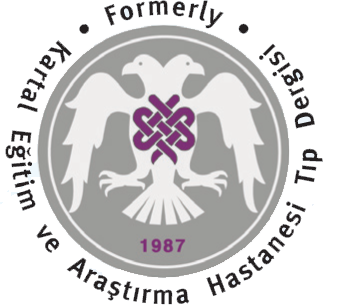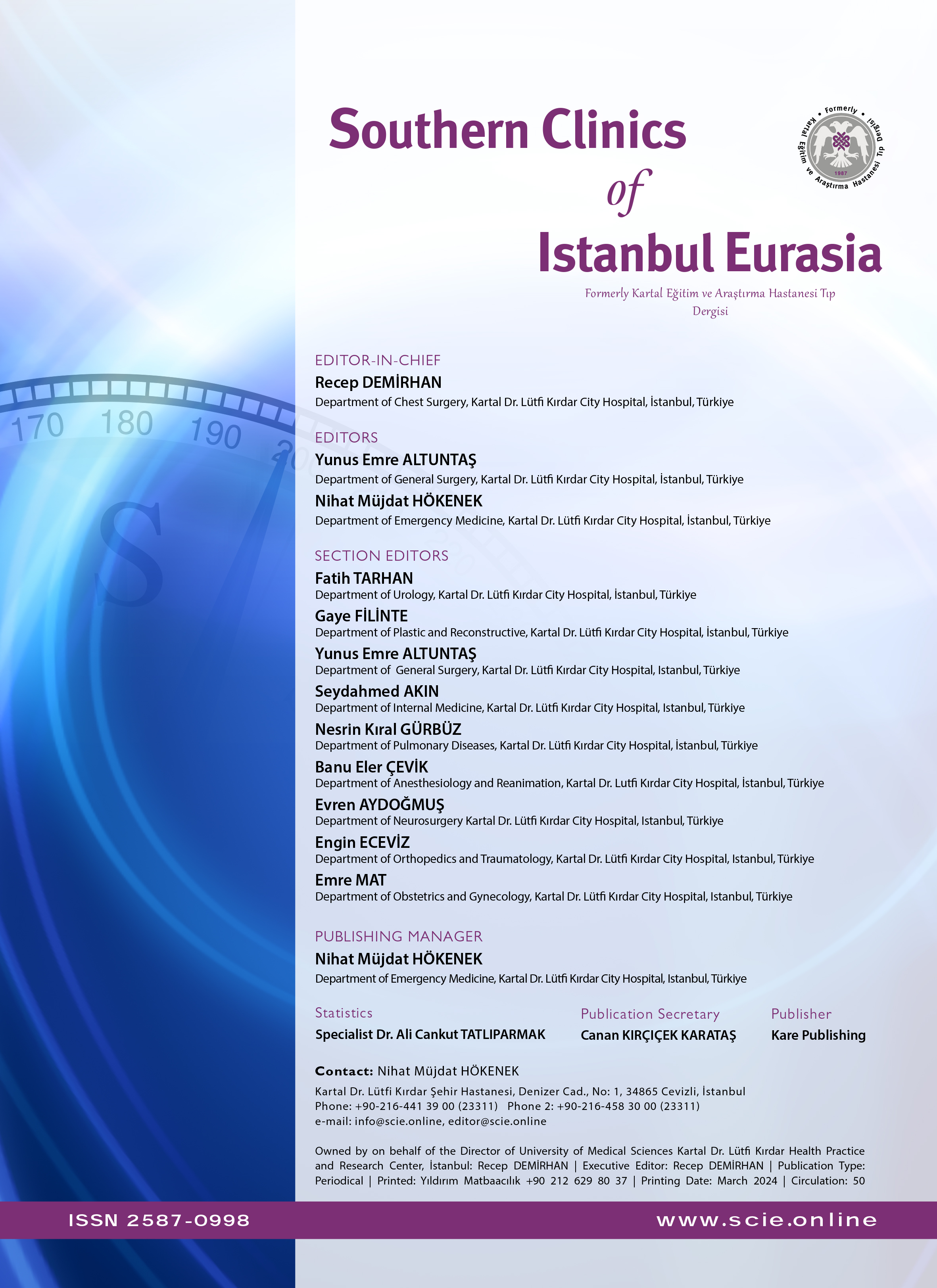THE PREVALANCE OF HEPATITIS B VIRUS IN HEALTHY AND HIGH RISK PREGNANTS
Cihan S Şengür1, Ekrem Orbay1, Handan Aksoy1, Kürşat Gökçe1, Orhan Ünal1Kartal Eğitim ve Araştırma Hastanesi Aile Hekimliği ADWHO has described that hepatitis B virus is the second most important carcinogen after smoking. The disease is an important health problem because it causes chronic hepatitis, other chronic hepatic diseases, cirrohis and hepatocellular carcinoma. The aim of this study is to show that every pregnant woman, whether in the risk groups or not, should be scanned for hepatitis B. A total of 624 pregnants, which 84 from high risk pregnancy section and 540 from delivery room and outpatient section, were taken into the study in the Gynecology and Obstetrics Department of Kartal Educational and Research Hospital. The mean age of HBsAg (+) pregnants scanned was 25 ± - 5.3 and the others' mean age was found as 26 ± -5.4. 7 pregnant women out of 84 in the high risk pregnancy section were HBsAg (+) and 26 out of other 540 pregnants were HBsAg (+). The rate of HBsAg positiveness was determined as 5.2 %. Anti-HBc and antiHBs were positive in 10 pregnants of the high risk group and in 100 of no-risk group. The rate of AntiHBs positiveness was determined as 17.6 %. The prevalance of hepatitis B virus infection in our samples was found as 22.8 %. These results were correspanding with studies for hepatitis B carriage held in our country. In HBsAg (+) cases, when hepatitis infection in history and/or hepatitis history in family were compared with other risk factors, the difference was found significant (p<0.05).The HBsAg positiveness rate in pregnants was higher than donors' in blood bank (p<0.05). No significant difference was determined in the HBsAg (+) pregnants' distribution according to age group, educational state, birth place and number of deliveries.
Keywords: PREGNANCY, HEPATITIS B INFECTIONSAĞLIKLI GEBELERDE VE RİSKLİ GEBELERDE HEPATİT B VİRÜSÜ PREVALANSI
Cihan S Şengür1, Ekrem Orbay1, Handan Aksoy1, Kürşat Gökçe1, Orhan Ünal1Kartal Eğitim ve Araştırma Hastanesi Aile Hekimliği ADDünya Sağlık Örgütü hepatit B virüsünü (HBV) sigaradan sonra en önemli ikinci kanserojen madde olarak tanımlamıştır. Hastalık kronikleşmeye, kronik karaciğer hastalıklarına, siroza ve hepatosellüler karsinomaya neden oluşu dolayısıyla önemli bir sağlık sorunudur. Bu çalışmanın amacı, gebe tüm kadınların riskli grupta olup olmadıklarına bakmaksızın hepatit B yönünden taranması gerekliliğinin gösterilebilmesidir. Kartal Eğitim ve Araştırma Hastanesi Kadın Hastalıkları ve Doğum Kliniği'nde 84'ü riskli gebelik bölümünde, 540 tanesi ise doğumhane ve poliklinikte olmak üzere toplam 624 gebe incelemeye alındı. Taranan gebelerden HBsAg (+) olanların yaş ortalaması 25 ± -5.3, diğerlerinin yaş ortalaması 26 ± -5.4 olarak bulundu. Riskli grup bölümündeki 84 gebenin 7 tanesi HBsAg (+), diğer 540 gebenin ise 26'sı HBsAg (+)'ti. HBsAg (+)'liği oranı % 5.2 saptandı. Riskli gruptaki 10 gebede Anti-HBc (+) ve AntiHBs(+), risksiz gruptaki 100 gebede Anti-HBc(+) ve AntiHBs(+) olarak bulundu. AntiHBs (+)'liği oranı %17.6 olarak saptandı. Örneklerimizdeki HBV enfeksiyonu prevalansı % 22.8 bulundu. Bu sonuçlar, hepatit B taşıyıcılığı yönünden yurdumuzda yapılan çalışmalar ile uyumlu olarak bulunmuştur. HBsAg (+) olanlarda, hikayede hepatit geçirme ve/veya ailede hepatit hikayesi diğer risk faktörleriyle karşılaştırıldığında fark anlamlı bulunmuştur (p<0.05). Gebelerdeki HBsAg (+) oranı, kan bankasındaki donörlere göre anlamlı derecede fazla olarak bulunmuştur(p<0.05). HBsAg (+) gebelerin, yaş grubu, eğitim durumu, gravida, doğum yeri parametreleri karşılaştırıldığında anlamlı bir farklılık saptanmamıştır.
Anahtar Kelimeler: GEBELİK, HEPATİT B ENFEKSİYONUManuscript Language: Turkish



















